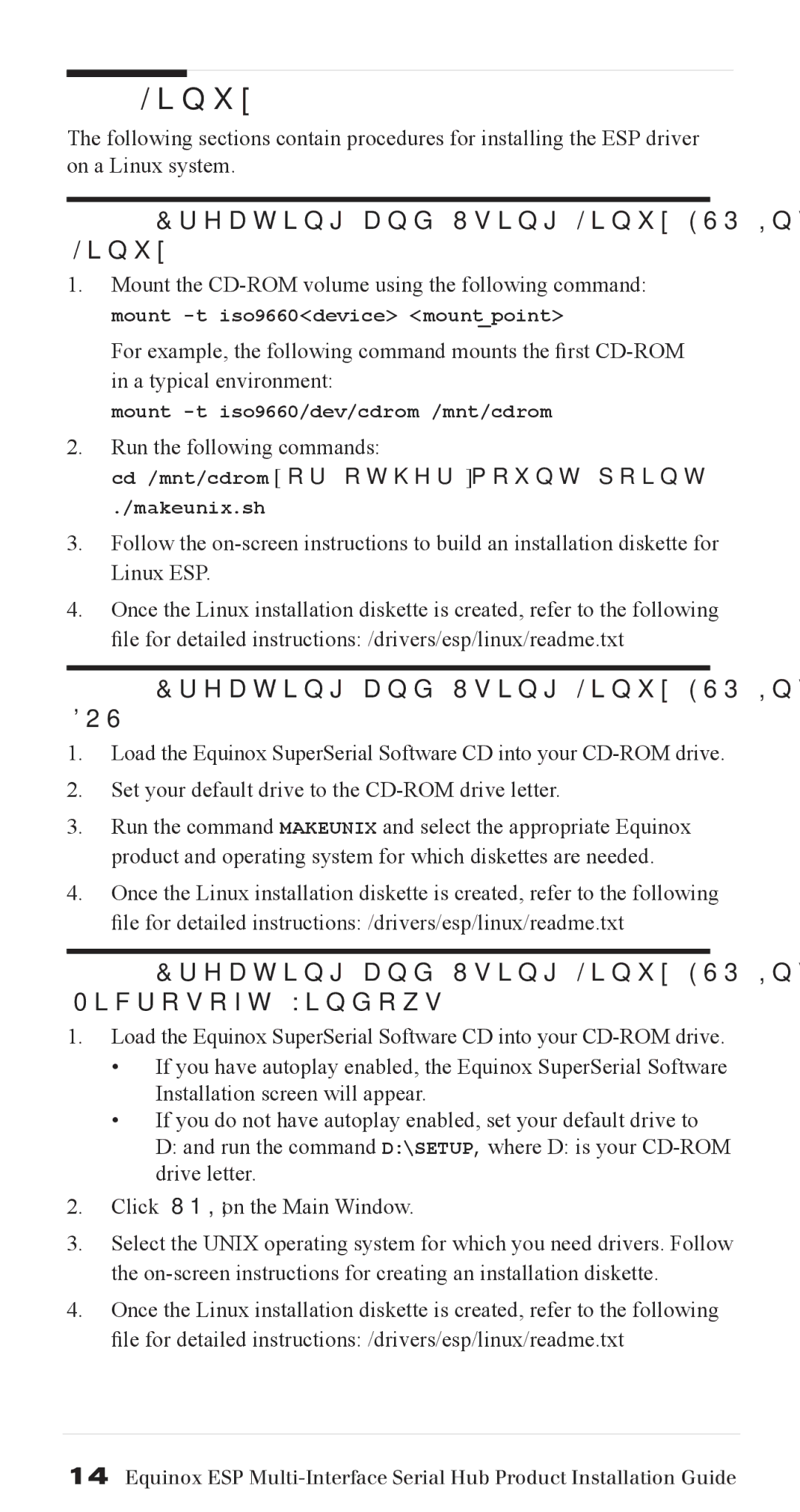
2.6 Linux
The following sections contain procedures for installing the ESP driver on a Linux system.
2.6.1Creating and Using Linux ESP Installation Diskettes on Linux
1.Mount the
For example, the following command mounts the rst
mount
2.Run the following commands:
cd /mnt/cdrom [or other mount point]
./makeunix.sh
3.Follow the
4.Once the Linux installation diskette is created, refer to the following le for detailed instructions: /drivers/esp/linux/readme.txt
2.6.2Creating and Using Linux ESP Installation Diskettes on
DOS
1.Load the Equinox SuperSerial Software CD into your
2.Set your default drive to the
3.Run the command MAKEUNIX and select the appropriate Equinox product and operating system for which diskettes are needed.
4.Once the Linux installation diskette is created, refer to the following le for detailed instructions: /drivers/esp/linux/readme.txt
2.6.3Creating and Using Linux ESP Installation Diskettes on Microsoft Windows
1.Load the Equinox SuperSerial Software CD into your
•If you have autoplay enabled, the Equinox SuperSerial Software Installation screen will appear.
•If you do not have autoplay enabled, set your default drive to D: and run the command D:\SETUP, where D: is your
2.Click UNIX on the Main Window.
3.Select the UNIX operating system for which you need drivers. Follow the
4.Once the Linux installation diskette is created, refer to the following le for detailed instructions: /drivers/esp/linux/readme.txt
14Equinox ESP
